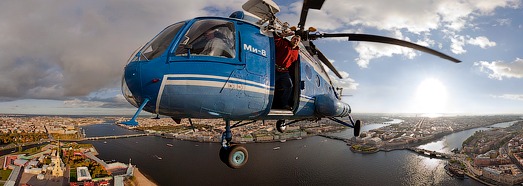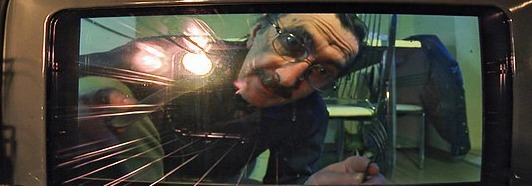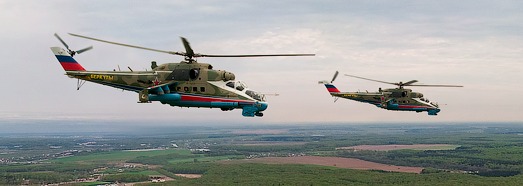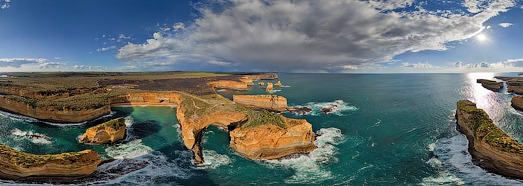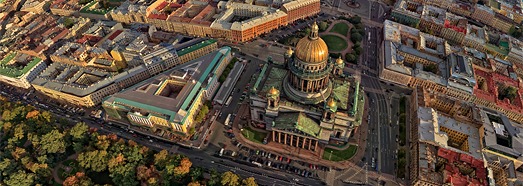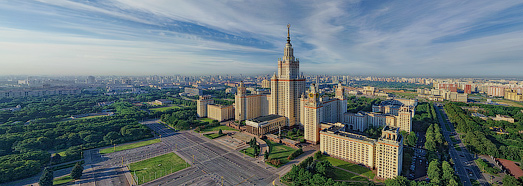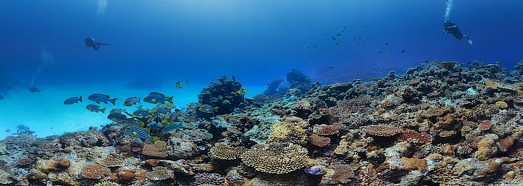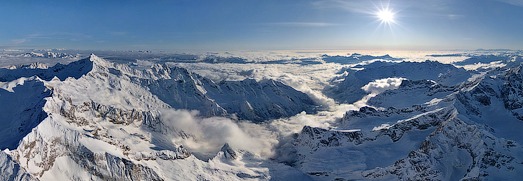تاريخ الميلاد: الجمعة 3 أغسطس 1923. تاريخ النياحة: السبت 17 مارس 2012. مكان الميلاد: قرية سلام بمحافظة أسيوط. الاسم قبل الرهبنة: نظير جيد روفائيل. التحق بجامعة فؤاد الأول، في قسم التاريخ، وبدأ بدراسة التاريخ الفرعوني والإسلامي والتاريخ الحديث، وحصل على الليسانس بتقدير (ممتاز) عام 1947. وفي السنة النهائية بكلية الآداب التحق بالكلية الإكليركية. وبعد حصوله على الليسانس بثلاث سنوات تخرج من الكلية الإكليريكية عمل مدرساً للغة العربية ومدرسا للغة الإنجليزية. حضر فصولا مسائية في كلية اللاهوت القبطي وكان تلميذاً وأستاذاُ في نفس الكلية في نفس الوقت. كان يحب الكتابة وخاصة كتابة القصائد الشعرية ولقد كان ولعدة سنوات محررا ثم رئيساً للتحرير في مجلة "مدارس الأحد" وفي الوقت نفسه كان يتابع دراساته العليا في علم الآثار القديمة. كان من الأشخاص النشطين في الكنيسة وكان خادماً في مدارس الآحاد. ثم ضباطاً برتبة ملازم بالجيش. رسم راهباً باسم (انطونيوس السرياني) في يوم السبت 18 يوليو 1954، وقد قال قداسته انه وجد في الرهبنة حياة مليئة بالحرية والنقاء. ومن عام 1956 إلى عام 1962 عاش قداسته حياة الوحدة في مغارة تبعد حوالي 7 أميال عن مبنى الدير مكرسا فيها كل وقته للتأمل و الصلاة. وبعد سنة من رهبنته تمت سيامته قساً. أمضى 10 سنوات في الدير دون أن يغادره. عمل سكرتيراً خاصاً لقداسة البابا كيرلس السادس في عام 1959. رُسِمَ أسقفاً للمعاهد الدينية والتربية الكنسية، وكان أول أسقف للتعليم المسيحي وعميد الكلية الإكليريكية، وذلك في 30 سبتمبر 1962. في الثلاثاء 9 مارس 1971 أجريت انتخابات البابا الجديد في الأربعاء 13 أكتوبر. ثم جاء حفل تتويج البابا (شنودة) للجلوس على كرسي البابوية في الكاتدرائية المرقسية الكبرى بالقاهرة في 14 نوفمبر 1971 وبذلك أصبح البابا رقم (117) في تاريخ البطاركة. في عهد قداسته تمت سيامة أكثر من 100 أسقف وأسقف عام؛ بما في ذلك أول أسقف للشباب، أكثر من 400 كاهن وعدد غير محدود من الشمامسة في القاهرة والإسكندرية وكنائس المهجر. أولى قداسته اهتماما خاصا لخدمة المرأة في الكنيسة القبطية الأرثوذكسية. بالرغم من مسؤوليات قداسته العديدة والمتنوعة إلا أنه يحاول دائماً قضاء ثلاثة أيام أسبوعياً في الدير، وحب قداسته لحياة الرهبنة أدى إلى انتعاشها في الكنيسة القبطية حيث تم في عهده سيامة المئات من الرهبان والراهبات.. وكان أول بطريرك يقوم بإنشاء العديد من الأديرة القبطية خارج جمهورية مصر العربية وأعاد تعمير عدد كبير من الأديرة التي اندثرت. في عهده زادت الابارشيات كما تم إنشاء عدد كبير من الكنائس سواء داخل أو خارج جمهورية مصر العربية، وانتقلت الكنيسة القبطية من المحلية إلى العالمية.. إلى أن تولى الرئيس السابق حسني مبارك مقاليد الرئاسة وقام في 1982 بالإفراج عن المعتقليين الذين قام سلفه السادات باعتقالهم وقابل بعضهم وكان على رأس هذا البعض "البابا شنودة"، ومن هذا اللقاء بدا واضحا أن سياسة الرئيس السابق تتجنب الصدام بأي شكل من الأشكال مع الأقباط خاصة وبوصفه كان مقربا من الرئيس "السادات" بحكم منصبه كنائب له. وطوال فترة حكم مبارك لم يخرج من البابا لفظ واحد ضد النظام أو الدولة ولا حتى ضد أي من ممثليه كوزراء أو مسئولين حكوميين، رغم أن فترة التسعينيات وبدايات الألفية الثانية شهدت العديد من الحوادث التي تصنف على أنها الطائفية بين المسلمين والمسيحيين الملتهبة متنوعة ما بين الاختلاف على بناء كنيسة وفي كل مرة اختار البابا الصمت أو الاعتراض بالاعتزال في ديرالأنبا بيشوي بوادي النطرون. وعن رحلته مع المرض .. فطوال 80 عاماً، من عمر البابا شنودة، لم يعان البابا من أى مرض مزمن، سوى أعراض السن والشيخوخة ولعل المرض الوحيد الذى عانى منه البابا منذ عشرات السنين، هو آلام الظهر، وهى الآلام التي تلازمه منذ عام ،1961 قبل رسامته أسقفاً بعام واحد إلا إنه فى الفترة الأخيرة عانى من من أمراض مزمنة مثل الفشل الكلوي وأورام بالرئة كانت تدفعه إلى الذهاب فى رحلات علاجية عديدة بالخارج . إلا أن البابا ظل صامدا فى أيامه الأخيرة وحتى بعد إجراء عملية جراحية بالعمود الفقرى أصر على إلقاء عظته الأسبوعية من على كرسى متحرك وسط دموع الأقباط داخل الكنيسة لتودع روحه العالم اليوم بعد حياة طويلة وحافلة بمواقف البطولة والعطاء. |









